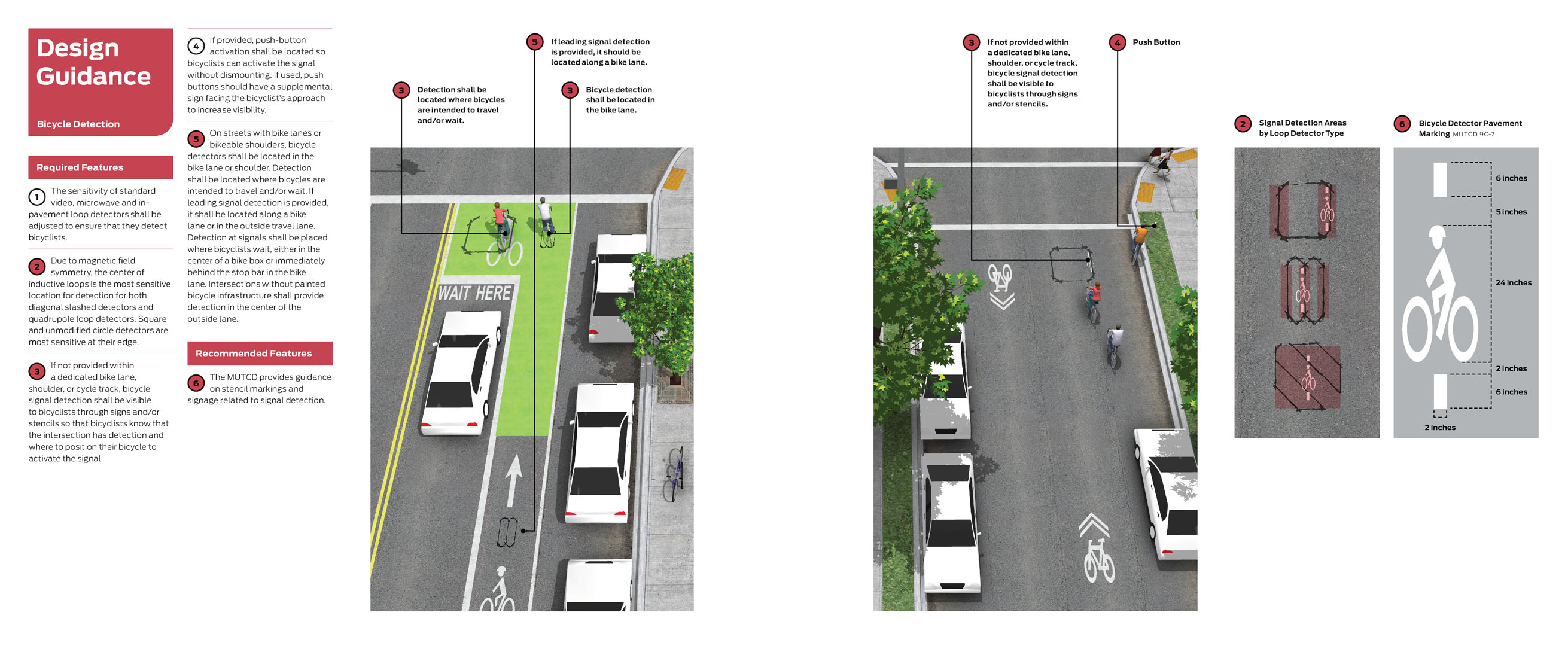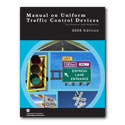Description
Bicycle detection is used at actuated signals to alert the signal controller of bicycle crossing demand on a particular approach. Bicycle detection occurs either through the use of push-buttons or by automated means (e.g., in-pavement loops, video, microwave, etc). Inductive loop vehicle detection at many signalized intersections is calibrated to the size or metallic mass of a vehicle. For bicycles to be detected, the loop must be adjusted for bicycle metallic mass. Otherwise, undetected bicyclists must either wait for a vehicle to arrive, dismount and push the pedestrian button (if available), or cross illegally.
Proper bicycle detection meets two primary criteria: 1) accurately detects bicyclists; and 2) provides clear guidance to bicyclists on how to actuate detection (e.g., what button to push, where to stand). This section covers four primary types of bicycle signal detection:
- Loop – Induction loop embedded in the pavement
- Video – Video detection aimed at bicyclist approaches and calibrated to detect bicyclists
- Push-button – User-activated button mounted on a pole facing the street
- Microwave – Miniature microwave radar that picks up non-background targets
Click on the images below to view 3D concepts of signal detection configurations.
Benefits
- Improves efficiency and reduces delay for bicycle travel.
- Increases convenience and safety of bicycling and helps establish bicycling as a legitimate mode of transportation on streets.
- Discourages red light running by bicyclists without causing excessive delay to motorists.
- Can be used to prolong the green phase to provide adequate time for bicyclists to clear the intersection.
Typical Applications
- In the travel lane on intersection approaches without bike lanes where actuation is required.
- At intersections with bicycle signal heads and/or bicycle-specific phasing that are actuated.
- In bike lanes on intersection approaches that are actuated.
- In left turn lanes with actuated left-turn signals where bicyclists may also turn left.
- To increase the green signal phase on intersection approaches whose combined minimum green plus yellow plus all-red is insufficient for bicyclists to clear the intersection when starting on a green signal. Advanced bicyclist detection can be applied to extend the green phase or to call the signal.
- At clearly marked locations to designate where a bicyclist should wait.
Design Guidance

| Recommended Features |
 |
The MUTCD provides guidance on stencil markings and signage related to signal detection. Read More+
 Stencil for marking location of most sensitive portion of traffic sensor (MUTCD Figure 9C-7) Stencil for marking location of most sensitive portion of traffic sensor (MUTCD Figure 9C-7)
 Informational sign describing optimum use of traffic sensor (MUTCD Sign R10-22) Informational sign describing optimum use of traffic sensor (MUTCD Sign R10-22)
Federal Highway Administration. (2009). Manual on Uniform Traffic Control Devices.
|
Maintenance
- Inductive loop detector sensitivity settings need to be monitored and adjusted over time.
Treatment Adoption and Professional Consensus
Bicycle signal detection is widely used in North American and European cities, both at standard signalized intersections and those with bicycle signal phases. Some US examples include:
- Austin, TX
- Berkeley, CA
- Marin County, CA
- Madison, WI
- Portland, OR
- San Luis Obispo, CA
- Santa Clara Valley, CA
Click to see the complete reference material for this treatment.